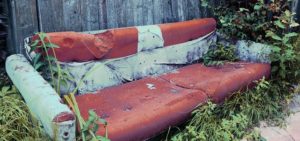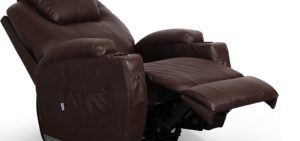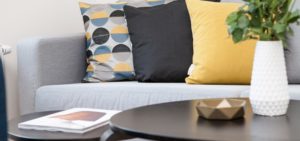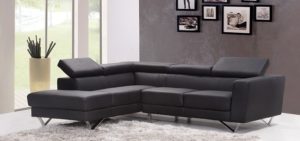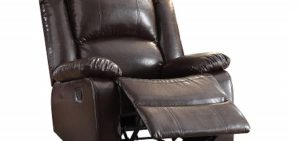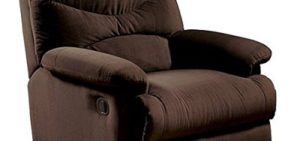Leather whether genuine or faux leather is one of the easiest Upholstery types to keep clean, although you do need to perform some maintenance and conditioning, particularly on genuine leather.
Leather, in general, need to be cleaned, and then well conditioned to keep it soft, supple and in good shape for a long time.
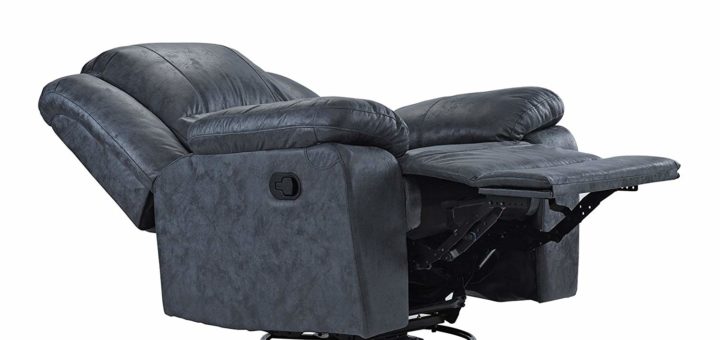
Leather Upholstery Types
Before we get to the cleaning and maintenance of Leather I first want to familiarize you with the types of leather, in this case concerning genuine leather;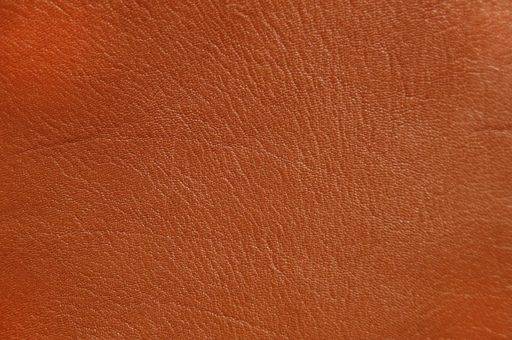
Unprotected Leather
Unprotected, or Aniline leather which is basically an unfinished form of leather has a very soft and luxurious velvety feel to it.
This is leather in one of its most raw forms, dyed with Aniline dye with no other surface pigment, and no added protective layer. You may see some natural grains and markings still visible on the leather.
This type of leather is extremely sensitive to staining, and damage by harsh chemicals and abrasive cleaning substances.
Some Unprotected leather types are injected with conditioning oils and wax to improve its appearance or is in the form of Nubuck leather which is buffed to create this effect.
Protected Leather
Protected or Semi-aniline leather is basically leather dyed with an aniline substance, as well as topped with a layer of protective pigment color.Protected leather is much more durable and stain resistant than an unprotected leather type, and you will see that it has a very uniform appearance and a stiffer feel to it. This type of leather is much easier to clean and can withstand wear and tear much easier.
What to Use on Your Leather Recliner
When it comes to tools and products used to clean your leather recliner, both Faux or Genuine, I would keep it simple, and try to avoid too many home remedies.The best option is to purchase a leather cleaning agent that is specifically designed for your genuine leather type, or for Faux leather. As both these are different materials types they require different cleaning products.
The same will go for your conditioning products, which is your second step after cleaning your leather recliner, and an important step to keep it in good shape.
Other than that, these are some safe materials and tools to use on most forms of leather;
- A Vacuum cleaner with a brush attachment or smaller attachment.
- Tarp or drop cloth.
- Soft Microfiber cloths.
- Distilled or boiled and cooled off water.
- A mild PH neutral liquid soap such as dove or Neutrogena can be used, try to avoid detergents, or rather opt for a specialized commercial soap.
- A commercial conditioning agent, or flax, or coconut oil for genuine leather only.
Cleaning Protected and Unprotected Leather Types
Unprotected Leather
Most Furniture specialists will recommend that you do nothing more than dust and vacuum your unprotected aniline leather recliners and furniture. Although ins some cases it is advised that you can use a slightly damp cloth and an approved leather cleaner for this specific leather type.Protected Leather
Semi-aniline leather or protected leather can stand up to heavier cleaning and a bit stronger products. Stay clear of ammonia or alkalies products which can damage any leather beyond repair. I would still recommend using a leather specific selling product and conditioner for Protected leather.Some leather products recommended by furniture makers are; Lexol, Mohawk, Leather Master, and Leather Magic.
Cleaning Steps
These Cleaning steps are specific to protected Leathers, which is usually the type of leather used for Recliners;
- Vacuum your entire recliner, making sure to get in between the crevices, if you can, using the brush attachment.
- Make sure to remove all large solid pieces stuck in the crevices by hand first.
- Use distilled or cooled down boiled water with a non-detergent soap or specialized commercial soap, and clean the entire recliner with a soft microfiber cloth.
- Use gentle wipes working from one area to the next.
- Now you can take a damp cloth and wipe off the excess soap and water.
- Dry your Recliner with a clean towel.
Conditioning Leather
You should thoroughly clean and condition all your leather furniture at least once every six months, to prevent it from drying out. Weekly spot cleaning with a damp microfiber cloth, is necessary to remove dirt build-up or stains.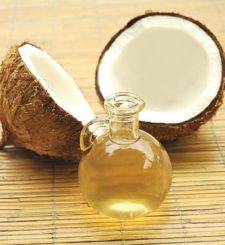 Although I would highly urge you rather to use a proper commercial conditioner specific to the type of leather that your recliner is, there are some other household options. Most commercial conditioners come with a hefty price tag, and I understand that this can be an issue, but would still encourage using them rather. Other options you can try are Organic cold pressed flaxseed oil, beeswax and coconut oils.
Although I would highly urge you rather to use a proper commercial conditioner specific to the type of leather that your recliner is, there are some other household options. Most commercial conditioners come with a hefty price tag, and I understand that this can be an issue, but would still encourage using them rather. Other options you can try are Organic cold pressed flaxseed oil, beeswax and coconut oils.
It is very simple to oil or conditions your leather recliner, simply use a soft rag and rub the oil into all the areas of the recliner thoroughly, and use an extra coat of oil on dry areas. You may need to leave the recliner to soak in oils overnight.
As a rule, always AVOID oils such as olive oil, baby oil, mineral oils and Neatsfoot oil especially!
Cleaning and Maintenance Steps for Faux Leather
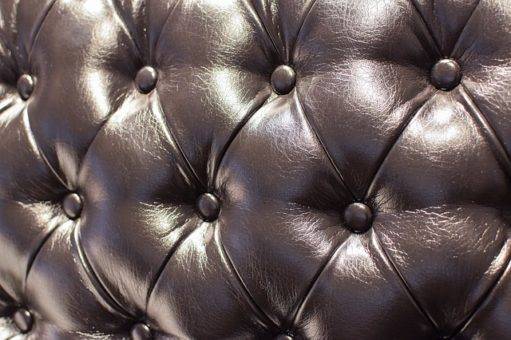
Most Faux leather types are made from either a Plastic or Vinyl material, which is not as sensitive to cleaning agents as genuine leathers although you should always avoid cleaning agents with abrasives and strong chemicals in them.
- Make sure to remove all large and solid bits in the crevices, and vacuum the entire Recliner thoroughly, particularly in folds and crevices.
- Use a mild soap with warm water, or a Vinyl cleaner and a soft brush to clean the entire recliner.
- Wipe away excess dirt and soap with a damp cloth.
- Dry the entire Recliner with a clean towel.
- You can use a PVC moisturizer or Vinyl protectant spray, which can be purchased from shoe and clothing stores that have faux leather items.
In Conclusion
As you can see with both Genuine, and Faux leathers it is very crucial that you use the right products and tools for the specific leather type, as to not damage your Recliner Upholstery.Six monthly thoroughly cleaning and conditioning should suffice, with in between, weekly spot cleaning.
Use proper products and conditioning agents on your recliner, and it will stay soft supple, and last longer!
Please Rate this Article:
Table of Contents
